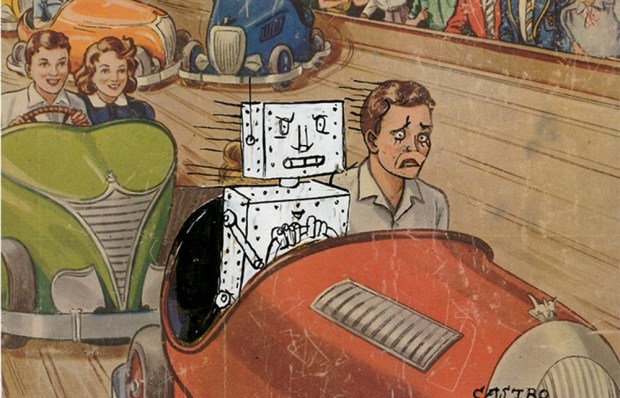In Jake’s Thing, Kingsley Amis gave it a name: he called it ‘the inverted pyramid of piss’: ‘One of [Geoffrey Mabbott’s] specialities was the inverted pyramid of piss, a great parcel of attitudes, rules and catchwords resting on one tiny (if you looked long and hard enough) point. Thus it was established beyond any real doubt that his settled antipathy to all things Indian, from books and films about the Raj, to Mrs Gandhi… was rooted in Alcestis’s second husband’s mild fondness for curries.’
It’s high time this phrase was revived, because piss pyramids are everywhere. We assumed more data would help humanity settle its differences: in reality it often exacerbates them. With ever more data, it becomes far easier, even without conscious intent, to find evidence to support your preconceptions. Or to take a meaningless small correlation and build a whole urinary edifice on top.
To be clear, this is what a robust statistical finding looks like. In Doll and Hill’s studies into smoking, after the first ten years of follow-up they reported 4,597 deaths and described an association between cigarettes and lung cancer. The annual death rate was 0.07 per 1,000 in non-smokers and 3.15 per 1,000 in men smoking 35 or more cigarettes per day.
Now it’s safe to say they were on to something. It’s 0.07 vs 3.15. That’s a 4,400 per cent increase. Yet in the world of narratives there is little distinction made between clear-cut findings such as this and those which show that, ‘after correcting for lifestyle factors’, eating bacon may elevate the risk of X in older Latino women by up to 8 per cent. The facts are different; the story sounds much the same.
This inversion — of deriving a truth from a tendency, or an ‘all’ from a ‘some’ — was particularly acute in the depiction of the Brexit voter after 2016. An academic, John Seed, recently released a paper describing how ‘the supposed frustrations of older white provincial “left-behind” working–class men became key to making sense of the result’. He has a point. This interpretation owes more to a need for sense-making than a reading of the facts. Very many such people voted to stay in. There was no gender divide in the referendum vote. On a constituency basis, twice as many constituencies voted Leave as Remain, including many wealthier ones. People given to lazy stereotypes might be surprised that 32 per cent of people who voted Liberal Democrat in 2015 voted Leave in 2016. Indeed the only group you could safely stereotype were Guardian readers, 88 per cent of whom voted Remain.
The truth is that real-world data is almost always messy and contradictory — like life. The instinctive human response to this messiness is to grasp for patterns to make sense of it, drawing heavily on existing preconceptions. I have just seen proprietary data on vaccine hesitancy in the US. It defies easy generalisation. One group highly likely to be unvaccinated is wealthy urbanites. On this side of the pond, only 62 per cent of over-12s in Kensington and Chelsea have had even a first dose of the vaccine. In Sunderland it’s 85 per cent.
In advertising, it’s vital not to confuse ‘user imagery’ with ‘target audience’. Advertisements for small cars typically show them driven by a woman in her late twenties. In reality the average new car buyer is around 57. But whereas 57-year-olds will happily buy cars ostensibly aimed at 27-year-olds, the same is not true in reverse. Think of an Apple customer and you might imagine a 26-year-old with a top-knot and a silly bike. The true demography of their customers is vastly more complex.
But we find it hard to resist simplification. As someone said of human perception: ‘We rarely understand what we see — so instead we see what we can understand.’
Got something to add? Join the discussion and comment below.
Get 10 issues for just $10
Subscribe to The Spectator Australia today for the next 10 magazine issues, plus full online access, for just $10.
You might disagree with half of it, but you’ll enjoy reading all of it. Try your first month for free, then just $2 a week for the remainder of your first year.















Comments
Don't miss out
Join the conversation with other Spectator Australia readers. Subscribe to leave a comment.
SUBSCRIBEAlready a subscriber? Log in